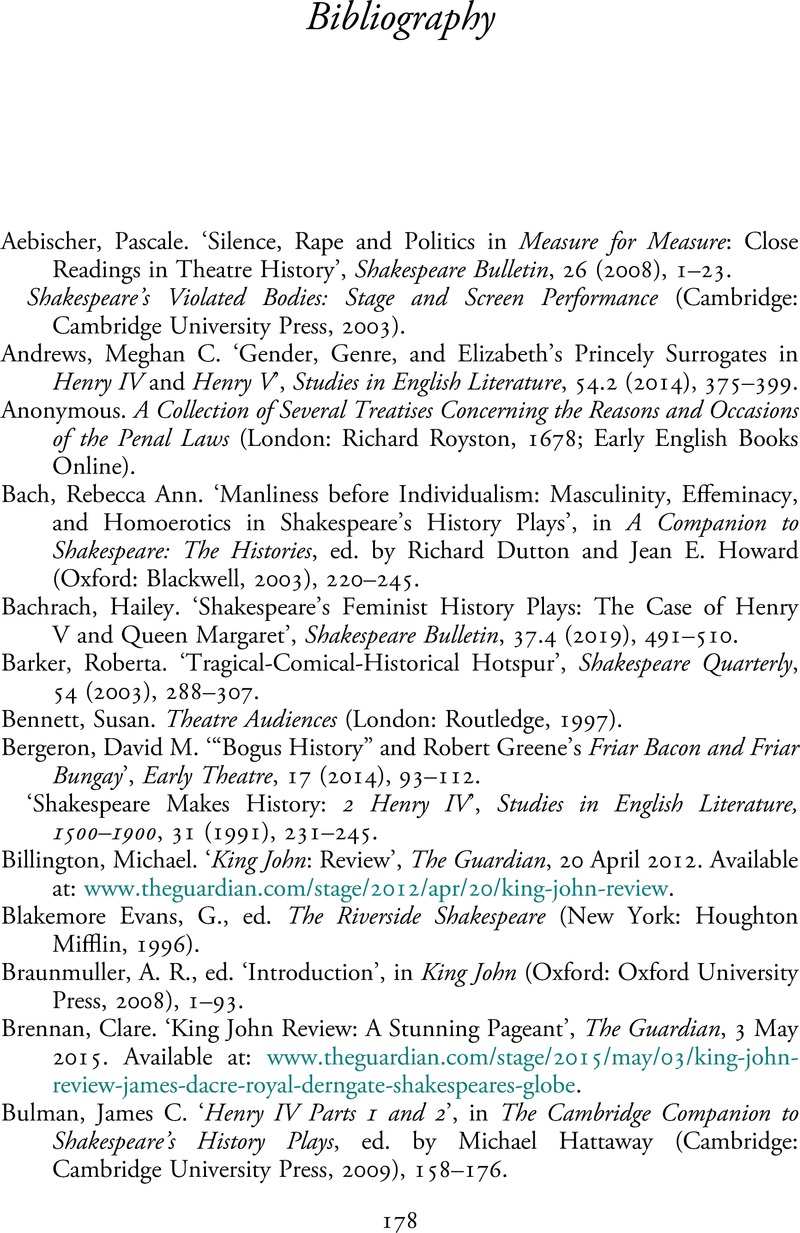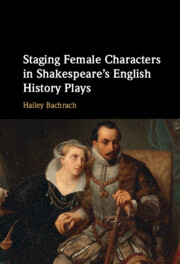Book contents
- Staging Female Characters in Shakespeare’s English History Plays
- Staging Female Characters in Shakespeare’s English History Plays
- Copyright page
- Contents
- Acknowledgements
- Note on the Text
- Introduction
- Chapter 1 Facts Disfigured
- Chapter 2 From the Margins
- Chapter 3 History as Exclusion
- Chapter 4 Blurring the Boundaries
- Conclusion
- Bibliography
- Index
- References
Bibliography
Published online by Cambridge University Press: 23 November 2023
- Staging Female Characters in Shakespeare’s English History Plays
- Staging Female Characters in Shakespeare’s English History Plays
- Copyright page
- Contents
- Acknowledgements
- Note on the Text
- Introduction
- Chapter 1 Facts Disfigured
- Chapter 2 From the Margins
- Chapter 3 History as Exclusion
- Chapter 4 Blurring the Boundaries
- Conclusion
- Bibliography
- Index
- References
Summary

- Type
- Chapter
- Information
- Staging Female Characters in Shakespeare's English History Plays , pp. 178 - 187Publisher: Cambridge University PressPrint publication year: 2023



